.png)
The Japan International Eye Hospital is the first Lasik center in Southeast Asia to own the Mel 90 Excimer Laser system (Carl Zeiss, Germany) – a Multipoint laser ignition system, used in SBK Lasik and Femtosecond Lasik surgeries. This is the most advanced generation of the Carl Zeiss Excimer Laser technology so far. Mel 90 stands out from its previous generations thanks to its Triple-A technology which is applied for the first time and flexible frequency conversion from 250 kHz to 500 kHz, allowing 1-diop decrease in about 1.3 seconds; automatic eye recognition, resulting in absolute safety even when the patient moves during the surgery; optimized Laser energy, resulting in accurate implementation, minimizing damage to corneal parenchyma and significantly minimizing postoperative complications such as halos, dazzling at night.
Visumax is the system used in Femtosecond Lasik and ReLEx SMILE surgeries. Visumax’s Femtosecond Laser technology is a breakthrough by Carl Zeiss, contributing to reshaping the refractive surgery technique of world’s ophthalmology. The Visumax’s Femtosecond Laser technology provides perfectly smooth, precise microsurgery incisions, and minimizes invasion of corneal cells. The Visumax is currently the only system designed with a tangent cone like an eyeball, of S, M, L sizes consistent with the eye structure of each patient, so it does not damage the cornea during and after the surgery. Its intelligent programmed laser system automatically adjusts following the eye movements during surgery.
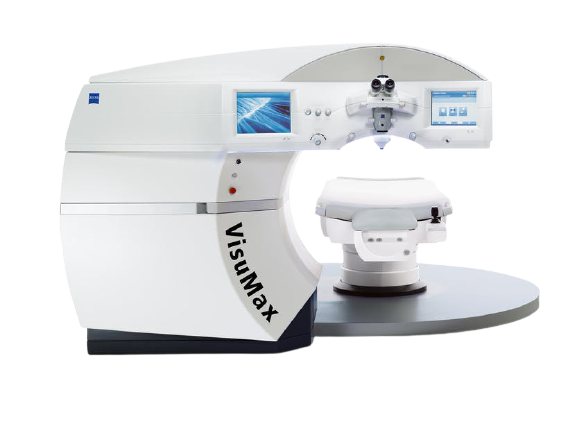
Visumax is the system used in Femtosecond Lasik and ReLEx SMILE surgeries. Visumax’s Femtosecond Laser technology is a breakthrough by Carl Zeiss, contributing to reshaping the refractive surgery technique of world’s ophthalmology. The Visumax’s Femtosecond Laser technology provides perfectly smooth, precise microsurgery incisions, and minimizes invasion of corneal cells. The Visumax is currently the only system designed with a tangent cone like an eyeball, of S, M, L sizes consistent with the eye structure of each patient, so it does not damage the cornea during and after the surgery. Its intelligent programmed laser system automatically adjusts following the eye movements during surgery.

Japan International Eye Hospital is the first in Vietnam to own the Johnson & Johnson Catalys system – USA – the leading device in Femtosecond Laser technology for cataract surgery. The high resolution 3D Optical Coherence Tomography (OCT) system is integrated on the Catalys equipment to help establish the exact position, size and depth of laser-assisted incisions. In addition, those with astigmatism will also get laser-assisted adjustment in the same lens replacement surgery. With the Catalys image-led Laser technology, Cataract Laser surgery will be personalized to each patient, bringing accuracy, flexibility and optimal treatment.
It is a device used in cataract surgery and vitrectomy with integrated and synchronous technologies, improving efficiency of surgeries. The system is used in the Phaco – Constellation (Alcon – USA) procedure with Ozil technology which is safe for lens diffusion and aspiration, maintains anterior chamber, and protects the endothelium and the lens capsule. With real-time infusion adjustments and Alcon’s exclusive non-invasive flow meter technology, the CONSTELLATION® Vision system increases stability of the vitrectomy.
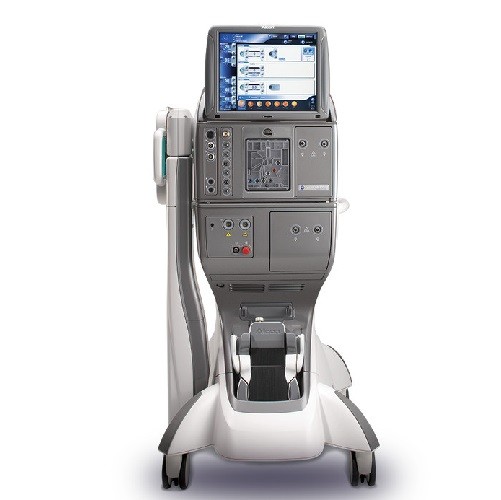
It is a device used in cataract surgery and vitrectomy with integrated and synchronous technologies, improving efficiency of surgeries. The system is used in the Phaco – Constellation (Alcon – USA) procedure with Ozil technology which is safe for lens diffusion and aspiration, maintains anterior chamber, and protects the endothelium and the lens capsule. With real-time infusion adjustments and Alcon’s exclusive non-invasive flow meter technology, the CONSTELLATION® Vision system increases stability of the vitrectomy.

Vision test (subjective and objective) is one of the most important factors supporting the ophthalmologists in diagnosing and making appropriate treatment indications. Understanding its significance, the Japan International Eye Hospital has used Topcon Japan’s 3D Vision Chart system (2014 generation). Its 3D operating mechanism delivers completely accurate and objective vision test results, independent of both lighting of the clinic and distance of the patients.
The laser-assisted surgical methods for myopia treatment work based on the principle of corneal thickness adjustment, so measurement of corneal parameters should be of primary attention and must be accurately assessed. The Carl Zeiss Visante linking Altas system delivers precise corneal structure parameters, effectively assisting the ophthalmologists in making reasonable surgical indications. This is the most advanced cornea map and corneal thickness measurement system in Vietnam today.
.png)
The laser-assisted surgical methods for myopia treatment work based on the principle of corneal thickness adjustment, so measurement of corneal parameters should be of primary attention and must be accurately assessed. The Carl Zeiss Visante linking Altas system delivers precise corneal structure parameters, effectively assisting the ophthalmologists in making reasonable surgical indications. This is the most advanced cornea map and corneal thickness measurement system in Vietnam today.

The new generation 3D OCT machine (Topcon – Japan), ultrasound scanner (Tomey – Japan), IOL Master biometer (CarlZeiss – Germany) provide maximum support for examination and early detection of problems at the back of the patients’ eye, so that the ophthalmologists can provide appropriate treatment options to help the patient improve maximum vision.
Understanding the importance of retina screening in assessing retina and eye health, the Japan International Eye Hospital has equipped the Optos Daytona to preserve the patient's eyesight. The Optos Daytona is a scanning retinal imaging instrument that is able to take ultra-wide images of a patient’s retina. This device can take around a 200-degree image of the retina in one image and can capture the picture in less than one second and without the use of dilating drops. As a result, it helps our doctors to diagnose eye diseases such as glaucoma, macular degeneration and diabetic retinopathy

Understanding the importance of retina screening in assessing retina and eye health, the Japan International Eye Hospital has equipped the Optos Daytona to preserve the patient's eyesight. The Optos Daytona is a scanning retinal imaging instrument that is able to take ultra-wide images of a patient’s retina. This device can take around a 200-degree image of the retina in one image and can capture the picture in less than one second and without the use of dilating drops. As a result, it helps our doctors to diagnose eye diseases such as glaucoma, macular degeneration and diabetic retinopathy
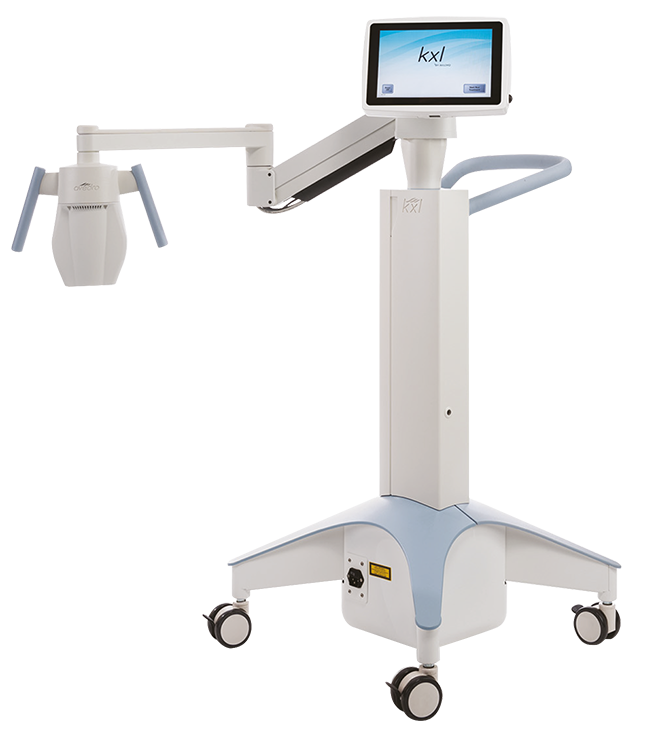
The KXL system of Avedro (USA) is used in the Crosslinking procedure to treat the apical cornea and to strengthen the cornea after laser refractive surgery. This is a device that possesses breakthrough innovations, with outstanding advantages such as possessing the highest power available today (up to 45 mW/cm2) but still keeping the safe UV radiation intensity within the allowable threshold to help reduce the time of UVA rays, increase patient comfort and significantly improve treatment efficiency. Crosslinking is accelerated with pulsed or continuous wave lighting technology.
The Cirrus 6000 is the latest generation of Carl Zeiss retinal tomography (OCT) devices. Cirrus 6000 offers high-speed imaging with 100,000 scans per second, sharp HD image quality, a wide field of view, and better detailed visualization of retinal microchips, helping doctors accurately assess clinical conditions, and offer the most optimal treatment plans. Cirrus 6000 provides accurate information for the treatment of Glaucoma, retinal diseases, and refractive surgery.
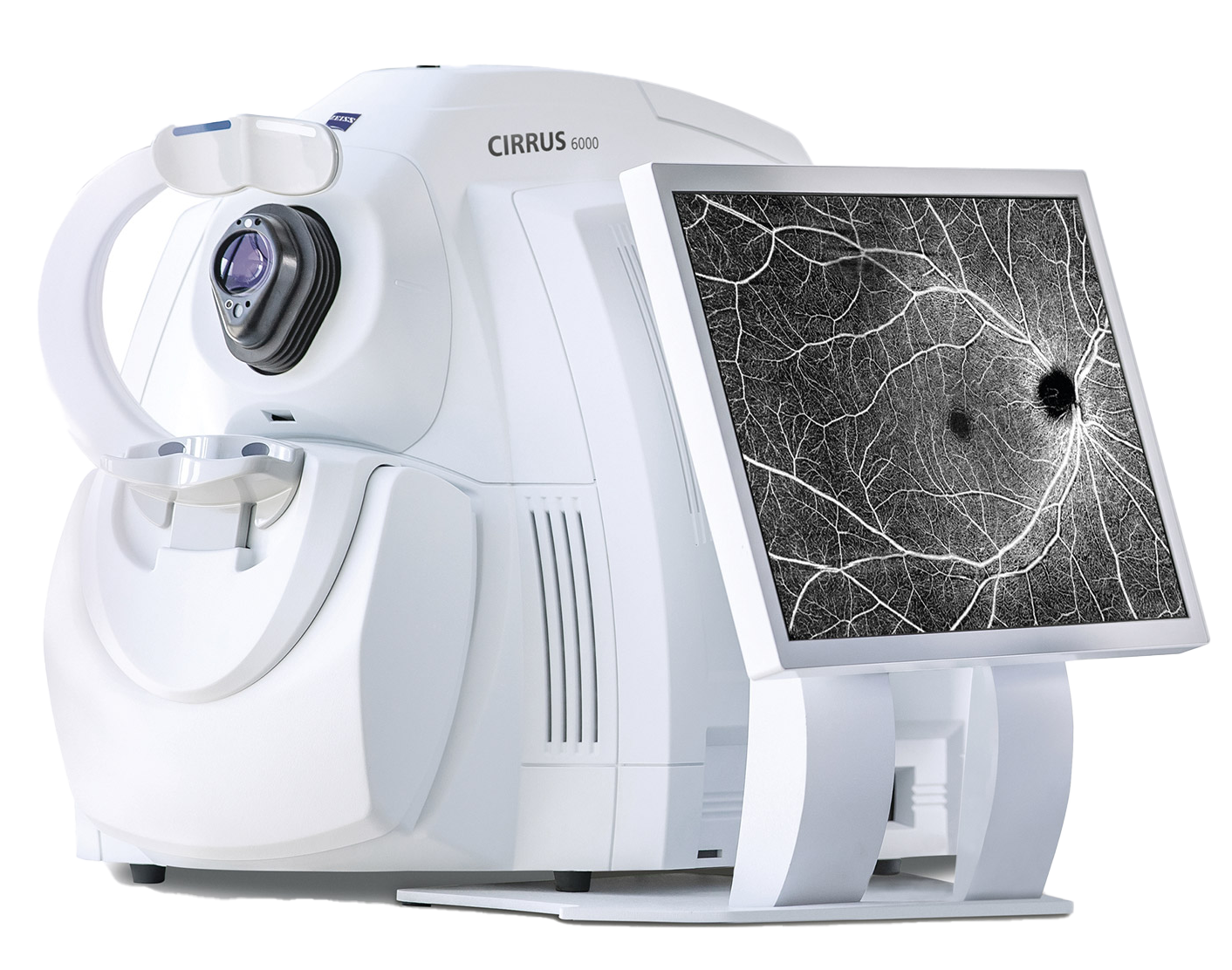
The Cirrus 6000 is the latest generation of Carl Zeiss retinal tomography (OCT) devices. Cirrus 6000 offers high-speed imaging with 100,000 scans per second, sharp HD image quality, a wide field of view, and better detailed visualization of retinal microchips, helping doctors accurately assess clinical conditions, and offer the most optimal treatment plans. Cirrus 6000 provides accurate information for the treatment of Glaucoma, retinal diseases, and refractive surgery.
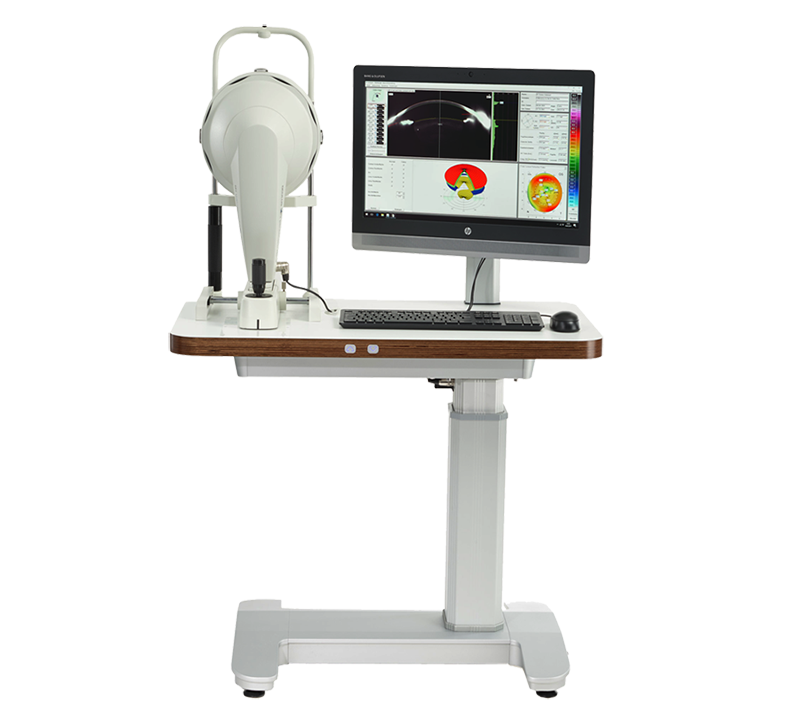
Pentacam HR machine is an anterior segment of the eyeball CT scanner, manufactured by OCULUS, Germany. Using a high-resolution Scheimpflug rotating camera system, it provides sharp images of the cornea, iris and lens. Pentacam HR is considered a "gold standard" medical device in anterior segment diagnosis. In just 2 seconds, this device can provide overall results of the anterior segment with 138,000 measurement points. Pentacam HR is used to map the front and back of the cornea, take CT scans and build 3D images of the anterior segment, measure corneal thickness, total refractive power of the cornea, and corneal power distribution at each position. Blue light technology allows Pentacam HR to detect abnormalities in the cornea and lens. The Pentacam HR performs non-invasive, large-area corneal surveys that are not affected by the condition of the tear film or the examiner, thereby providing accurate parameters. Combined with the Belin/Ambrósio analysis software, the Pentacam HR helps to provide comparisons and assessments to support doctors in diagnosing and detecting early diseases and abnormalities in the anterior segment of the eyeball.
IOLMaster 700 is the most advanced lens power measuring device today, considered a "revolution" in cataract surgery thanks to its ability to provide accurate results on the axial length of the eyeball, corneal curvature, corneal power, central corneal thickness, anterior chamber depth, lens thickness and horizontal diameter of the eye. Thanks to modern SWEPT Source OCT technology and Total Keratometry (TK) feature, IOLMaster 700 allows direct measurement of the posterior surface of the cornea, helping to minimize refractive errors. The patented cornea-to-retina scanning technology enables the device to display anatomical details on a vertical cross-section of the entire eye, thereby detecting abnormalities in the eye structure such as tilt or misalignment of the lens, supporting the doctor in surgical indications for high treatment efficiency. Twin technology helps reduce examination time for patients with the ability to measure 2 eyes in less than 45 seconds and a cataract penetration rate of up to 99%. Unique telecentric biometric measurement technology allows for accurate measurements with a repeatability of up to 2000 scans per second, optimal even in situations where the patient is difficult to cooperate with. With the above outstanding advantages, the IOLMaster 700 device helps the examination process become more efficient and faster, thereby allowing patients to restore optimal and stable vision after cataract surgery.
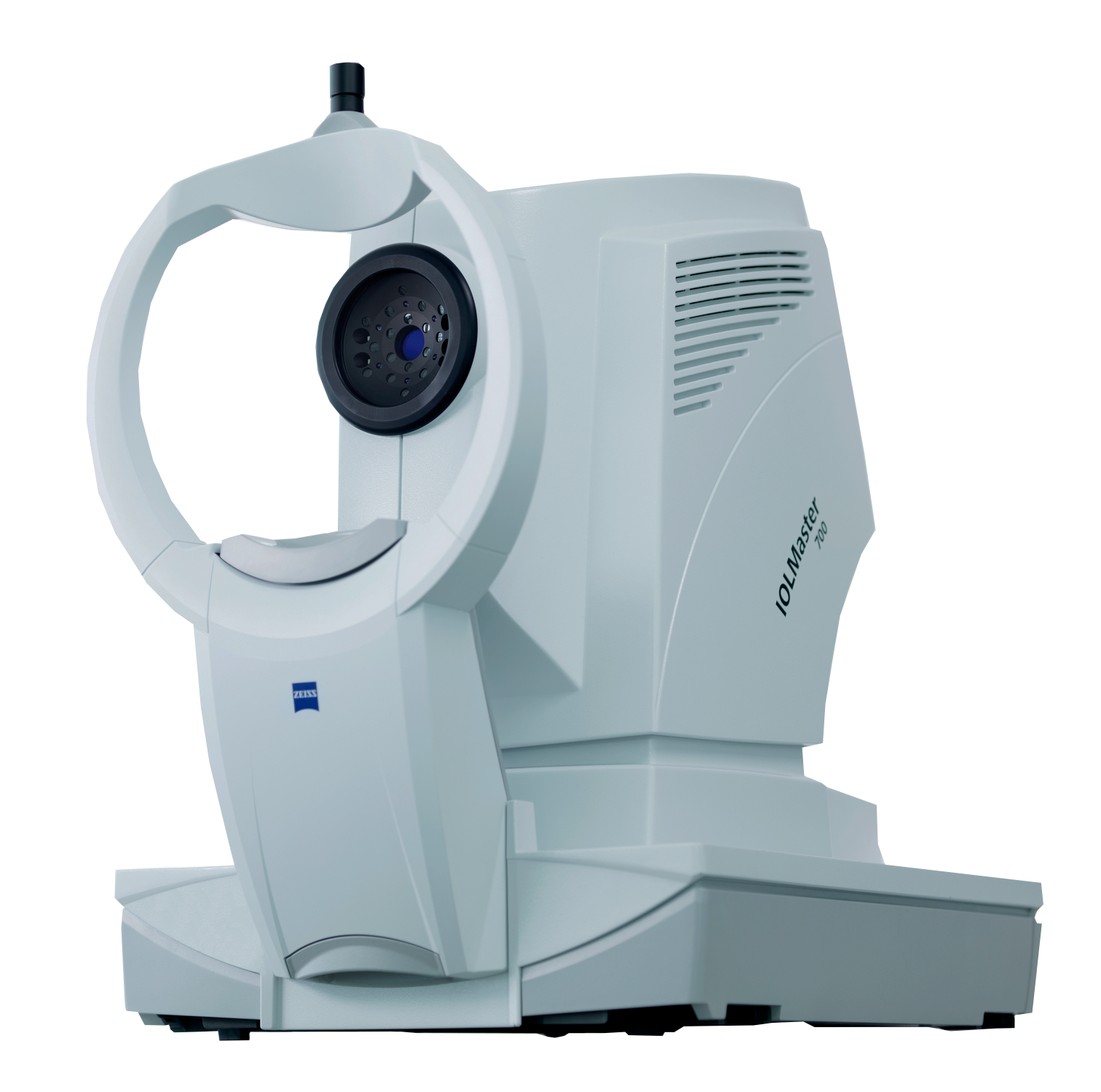
IOLMaster 700 is the most advanced lens power measuring device today, considered a "revolution" in cataract surgery thanks to its ability to provide accurate results on the axial length of the eyeball, corneal curvature, corneal power, central corneal thickness, anterior chamber depth, lens thickness and horizontal diameter of the eye. Thanks to modern SWEPT Source OCT technology and Total Keratometry (TK) feature, IOLMaster 700 allows direct measurement of the posterior surface of the cornea, helping to minimize refractive errors. The patented cornea-to-retina scanning technology enables the device to display anatomical details on a vertical cross-section of the entire eye, thereby detecting abnormalities in the eye structure such as tilt or misalignment of the lens, supporting the doctor in surgical indications for high treatment efficiency. Twin technology helps reduce examination time for patients with the ability to measure 2 eyes in less than 45 seconds and a cataract penetration rate of up to 99%. Unique telecentric biometric measurement technology allows for accurate measurements with a repeatability of up to 2000 scans per second, optimal even in situations where the patient is difficult to cooperate with. With the above outstanding advantages, the IOLMaster 700 device helps the examination process become more efficient and faster, thereby allowing patients to restore optimal and stable vision after cataract surgery.
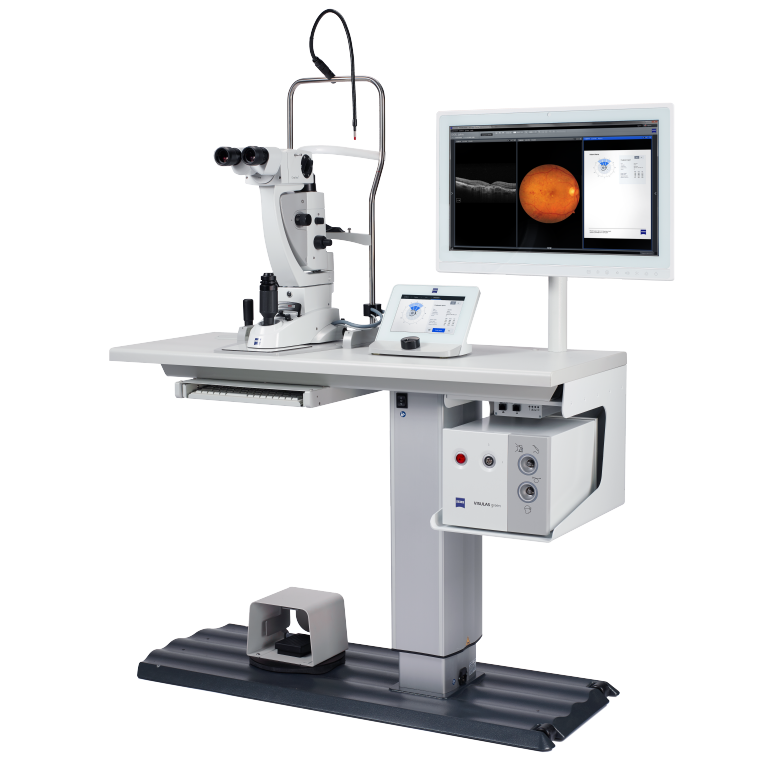
Zeiss VISULAS Green is a laser device used in retinal photocoagulation laser procedures to treat retinal degeneration or tears, selective trabeculoplasty laser to treat primary open-angle glaucoma or some forms of secondary open-angle glaucoma and posterior capsulotomy laser. Visulas is highly appreciated for its precision in treatment thanks to its advanced optical system with LED laser slit lamp to ensure clear display of the treatment area, ClearView filter to display the treatment area with true color and electronic microcontroller to help the doctor manipulate and navigate accurately. The coaxial laser beam helps the treatment to be safe and convenient even in the peripheral area. In addition, VITE multi-spot and intermittent photocoagulation technology helps shorten the treatment time and reduce pain for the patient.


